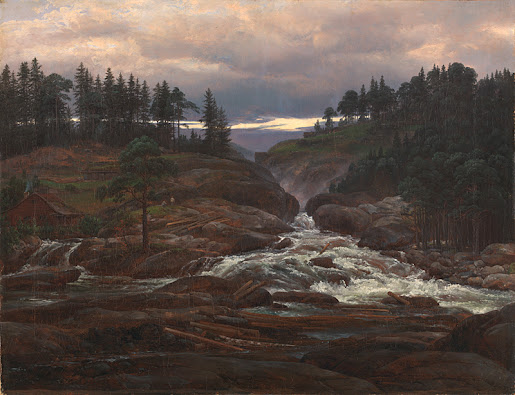Leslie Jackman was a man of many parts: teacher, broadcaster, museum officer, film-maker, and author [1]. He was a noted natural historian and an important influence on a generation of young people, of which I was one, and I had the added bonus of meeting him, as we both lived in Paignton in Torbay [2]. Although he wrote about terrestrial natural history and the life found in streams, rivers and lakes, Leslie seemed especially fascinated by the coast and by marine biology. He encouraged others to share his enthusiasm by “rock-pooling” and by looking at plants and animals in aquaria.
This is clear in the
Preface of Marine Aquaria [3]:
The address given in the Preface is “The Seashore Aquarium, Paignton” and this was run by Leslie and, if my memory serves me correctly, was located adjacent to Paignton Harbour in the building shown in the image at the top of this blog post. This was a fitting site, as many specimens were brought to the aquarium by local fisherman [3].
It is clear that
Leslie pays homage to Gosse and later in the book we read:
The first great seashore observer was Gosse. He lived a hundred years ago, but his writings are classics of observational work. Gosse never lost the freshness of excitement that came from new discovery and his appetite for knowledge was insatiable. If you desire, as did Gosse’s friend Charles Kingsley in Glaucus, to walk on and in under the waves” you will have found a new and absorbing interest in your aquarium.
Gosse’s The
Aquarium [4] and the handbook based on the final chapter of the
earlier book and sold at a price that made it more available to a wide audience
[5] contain all the information needed for aspiring aquarists.
Marine Aquaria, written more than
60 years ago, had much in common with the earlier works by Gosse and they cover
the same ground. Of course, there are differences in that Leslie discusses the
use of plastics and air pumps, neither being available in Gosse’s day.
Intriguingly, we read in Marine Aquaria that good conditions
for animals can be provided by an aeration system based on reservoirs (see
below, upper) and this is almost identical to a system that Gosse rigged up in
his home in Torquay [2]. Gosse’s observation tank was, however, less elaborate
than that shown in The Aquarium, this being a top-of-the-range
parlour model with all the plumbing hidden in the pedestal (see below, lower).
So, what was the audience for the books by Henry Gosse and Leslie Jackman?
Judging by the Preface of Marine Aquaria, the audience was male,
but this was, of course, just a form of expression of the times and Leslie
promoted an interest in natural history in boys, girls, men and women. Interestingly,
women played an important part in the development of collecting on the shore -
Anna Atkins with her cyanotypes of algae [6], Anne Pratt with her seashore
guide [7], and Margaret Gatty with her work on seaweeds [8]. Torbay, and the
adjacent coastline, was something of a mecca for the popular appreciation of
life on the shore for both men and women, the latter having to pay special
attention to the clothes that they wore [9]. In addition to Gosse, Amelia
Griffiths was resident in the town, making important contributions to the study
of algae [8], and, as Leslie Jackman mentions, Charles Kingsley also visited
Torbay in the 1850s and in Glaucus heaps praise on Henry
Gosse. The two became close friends [2].
What has happened to
our interest in life on the shore and in marine biology since the publication
of Leslie Jackman’s book? There was clearly little difference between its
content, and advice, to that which had been published a hundred years before.
Many of us still enjoy looking in rock pools and there are many aquarists,
although few collect animals from the shore for their aquaria. We can SCUBA
dive, or snorkel, if we want to see marine organisms in their natural
environment, and we can visit huge aquaria that are now part of the
entertainment industry, with tanks so large that they approximate to natural
habitat (although the animals and plants that they contain are selected by the
aquarium managers). Both have an educational value, but there is no longer an
appetite for making one’s own aquarium to allow close observation. We now have
numerous videoclips for that and there are also wonderfully-shot TV programmes
that we can enjoy in the comfort of our living rooms, but how real is it to
us?
Something is missing
from the thrill that Henry Gosse and Leslie Jackman encouraged – something that
is life-enhancing, as any first-hand study of the natural world will be. I
collected plants and animals and had aquarium tanks at school [2] and even kept
some animals in bowls at home. I am very grateful that I knew Leslie Jackman –
and I feel that I know Henry Gosse – and I am also grateful to have been
brought up in Torbay and collected on the shores that inspired them. They
inspired me, too.
[1] http://www.rwotton.blogspot.com 21st January
2013
[2] Roger S Wotton
(2020) Walking with Gosse. e-book, available at Amazon, Barnes
& Noble, etc..
[3] L. A. J. Jackman
(1957) Marine Aquaria. London, Cassell and Company
[4] P. H. Gosse
(1854) The aquarium: an unveiling of the wonders of the deep sea.
London, John Van Voorst.
[5] P. H. Gosse
(1855) A handbook to the marine aquarium: containing practical
instructions for constructing, stocking, and maintaining a tank, and for collecting
plants and animals. London, John Van Voorst.
[6] http://www.rwotton.blogspot.com 20th April 2016
[7] http://www.rwotton.blogspot.com 16th October
2017
[8] http://www.rwotton.blogspot.com 30th December
2013
[9] http://www.rwotton.blogspot.com 6th January
2014






